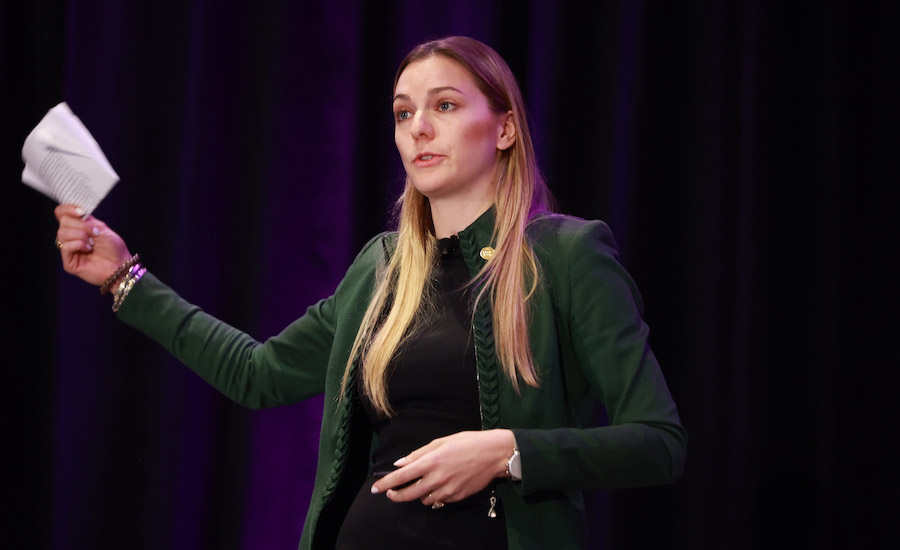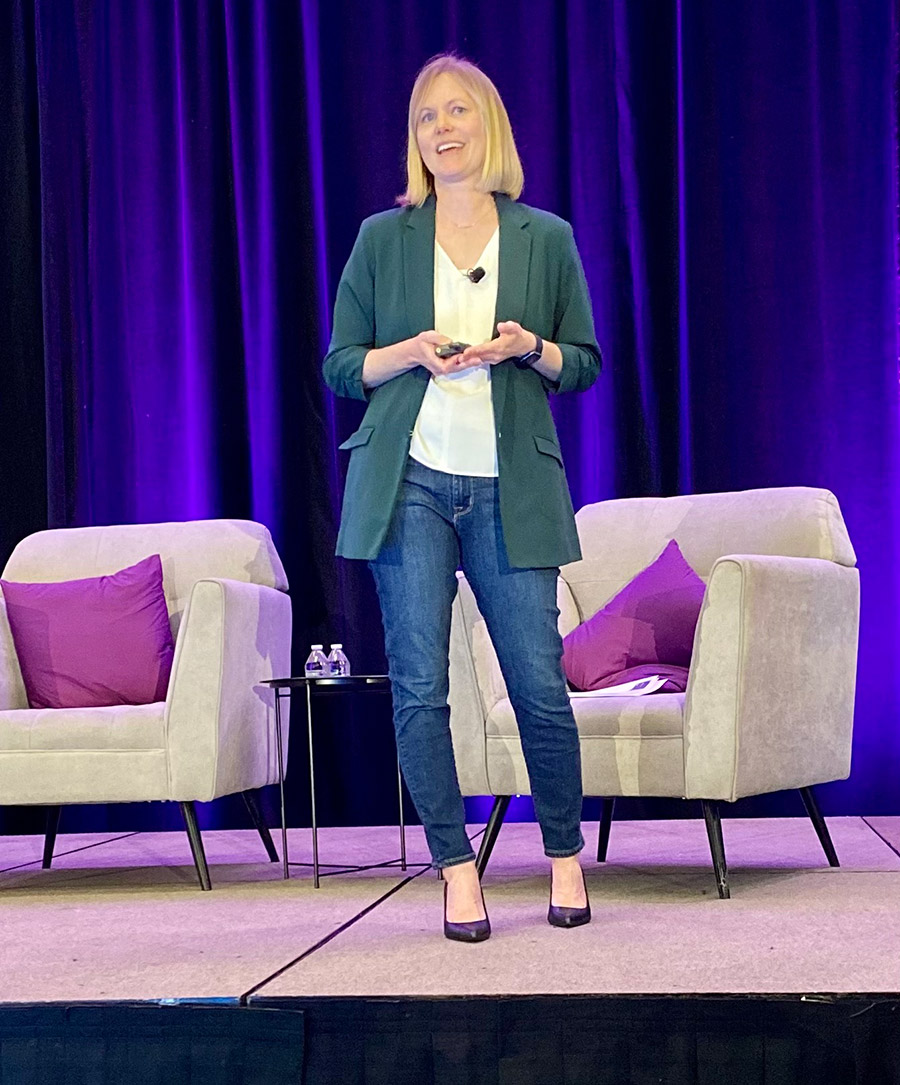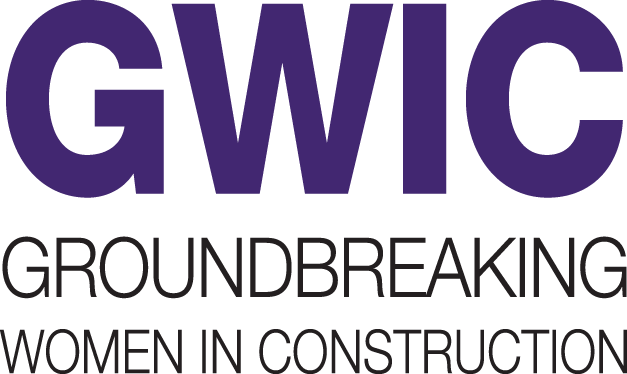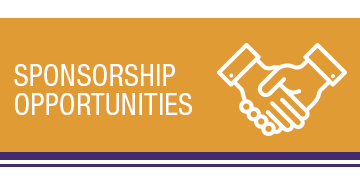A construction technology entrepreneur described her firm’s artificial intelligence tool that can digest 3.6-million construction document pages to enable a project team to more quickly and realistically use the megavolume of detail to make job decisions.
A U.S. General Services Administration design and construction director said her team builds and manages key federal government building stock for a multistate region—but only works in the office two days in a two-week pay period.
A Skanska business planning and strategy director busted perceptions about generational differences in its construction workplace. “Just because I’m not working in a construction trailer until 10 p.m. doesn’t mean I’m not working,” she said. “I can take calls, answer questions—anywhere.”
The Port Authority of New York and New Jersey’s deputy chief engineer said, “I’m not the boss … you’re not the boss … the project is the boss. We need to work collaboratively to deliver what the project needs.”
These four construction professionals and more than 750 others at the 2024 Groundbreaking Women in Construction conference, held May 5-7, shared how emerging priorities, developing skill sets, stronger advocacy and trailblazing technologies are changing the trajectory of industry careers for women now—and into the future. ENR produced the event, in San Diego, for construction law firm Peckar & Abramson.

Trunk Tools CEO Sarah Buchner urged GWIC attendees to embrace the use of AI technology as a tool to elevate critical project knowledge that could “fundamentally advance
your career.”
Photo by Les Kamens, The Photo Group for ENR
Al: Career Reward and Risk
Rising industry AI expert Sarah Buchner shared how negative reactions to her success potential as a woman in construction that started when she was a young carpenter and continued in a pursuit of advanced training, drove her to gain a PhD in data engineering, a Stanford University MBA and 20 years of project management experience. She then launched Trunk Tools, a cutting-edge technology platform that recently won $10 million in seed funding.
“I personally believe the American Dream is still alive, especially in construction,” said Buchner, the firm’s CEO. “If you look at the CVs of the people in your C suite, almost all of them have come up in the ranks—and if they did that, so can you.”
Buchner and other AI experts urged attendees to embrace the use of the technology as a tool to elevate critical project knowledge that could “actually fundamentally advance your career,” the tech CEO said.
AI is set to gain industry acceptance faster than usual for technology, providing a greater “level of empowerment that we can see out of tools that are available,” said Meirav Oren, founder and executive chair of AI platform Versatile. Andra Kidd, CEO of consultant Spheros Environmental noted its potential for use throughout a project life-cycle and on corporate functions from marketing and human resource management—even to changing the tone of emails. “We're only just scratching the surface in terms of its power,” she said.
"We are really focusing on data governance because if you don't get your data right you can have all the AI power you want, it's going to spit out garbage."
Tannis Liviniuk, Digital Advancement Executive, Zachry Group
But the AI experts at GWIC noted uncertainties and risks that keep AEC users and clients skeptical. “Whenever you apply AI, you may not have visibility into design decisions that were taken, which makes people a little bit nervous,” said Ann Esbeck, Bechtel's chief innovation officer. She also noted concern “about third-party intrusion, and having access to a very well curated set of data that has all of your secret sauce in one place.”
Tannis Liviniuk, Zachry Group's digital advancement executive, said the firm is already using AI in some workflows “where we're seeing a lot of excitement.”
The firm is “really focusing on data governance, because if you don't get your data right, you can have all the AI power you want, it's going to spit out garbage,” she said, emphasizing that “getting people to trust the tools that we're deploying is really key to facilitating the change management portion of it.”
Buchner maintains AI expertise would be a big career booster for industry women, who “historically have always been better at change than men.”
But Liviniuk noted one recent study showing a potential gender gap in deployment—with 59% of men using generative AI daily or weekly but only 51% of women, even among Gen Z users. “We should be thinking about why that is and how we can ensure that women on our teams have access to these tools, and awareness” of their applications and benefits, Liviniuk asserted.
“Be leaders in adopting technology that would make you better and make your company better,” said Oren. “Step up to the table and actually demand those tools. Don't wait for someone to give them to you.”

Construction firm executives (left to right) Eric Stenman, president and CEO of Balfour Beatty US; Greg Patzer, vice president of Arevon Energy; David Lincoln, Rosendin Electric senior vice president; and Krista Twesme, Mortenson Construction senior vice president, exchanged views on "ally-ship" needed between women and men to advance industry diversity.
Photo by Janice L. Tuchman for ENR
Women Power Up
Women leaders of groundbreaking project developments in energy transition also shared details of how technologies of tomorrow are taking shape now to combat climate change impacts.
“When we're thinking about solving energy transformation and getting to net zero and carbon neutral, it’s a very daunting, challenging task,” said Carol Mak, Southern California Gas Co. gas control system planning manager, noting its nation-leading efforts to pilot test hydrogen fuel blending. “But what an exciting time to be in this space seeing the innovation that's continuing.”
Mortenson Construction, an industry pioneer in renewable-energy construction, is propelling efforts to develop green hydrogen powered by wind, solar and other clean energy, said Megan Knoch-Dohlin, the contractor’s sector strategy director.
“We're solving problems that no one has solved before and women are so well positioned to help solve those problems, coming with new and innovative ideas,” she said, urging women “who are going first, don't just open the door, break down the wall so those behind you have an easier time.”
Margaret Montgomery, head of the sustainability practice at NBBJ, the architect for the central utility plant at a pioneering 900-well geothermal heating and cooling project for Microsoft's East Campus redevelopment in Redmond, Wash., attributes project success to strong team dynamics. Terming it a “remarkable project” and “one of those amazing opportunities for collaboration,” she said the 72-acre modernization is creating “3 million sq ft of buildings that use no fossil fuel and have no carbon emissions.”
Also seeking to significantly change the status quo is Valerie Roberts, chief operating officer of Longview Fusion Energy Systems, a technology startup that aims “to deploy laser fusion power plants in time to make a difference,” she told GWIC attendees, with its first project now underway. The firm’s process stems from decades of U.S. Energy Dept. research and a breakthrough in 2022, noted Roberts, a veteran DOE engineer. “This is probably the hardest thing I've done in my entire 35 year career,” she said.
Public Service: New Image
Government’s more pronounced role in policymaking and funding infrastructure development has enabled and expanded leadership roles for women and allowed them to manage the “cool projects,” reshaping the image of public service, panelists shared.
Kara Boyles joined the municipal engineering staff of South Bend, Ind., a decade ago under former Mayor Pete Buttigieg, now U.S. Transportation Secretary, and currently leads design and construction for the city of 100,000. “My personal values really align with the mission of the city, which was to deliver services that empower everyone to thrive,” she said.
Mai Hattar, assistant engineering group manager of utlity Metropolitan Water District of Southern California, noted its mission “to deliver clean drinking water to 19 million people,” which now includes a major collaboration with regional water authorities to develop “one of the world’s largest” water-recycling efforts to recharge drought-hit groundwater basins to enable direct potable reuse in the next decade.
Amanda Rogers, deputy chief engineer of the Port Authority of New York and New Jersey, a leader of the regional transportation agency’s push to propel COVID-delayed infrastructure megaprojects, also advocated public service for women but urged them not to “rush your progression.” She touted agency collaboration with contractors to insure project success but acknowledged “it's sometimes a little bit easier said than done.”
Stacey Yee, GSA’s San Francisco-based director of public buildings work in California, Arizona, Nevada, Hawaii and Pacific Islands, joined the agency after gaining an architecture degree. “What's been appealing is having that larger impact, getting to work with all the different communities, the architects, engineers and construction firms, and being able to bring it all together to make a difference,” she said.
That was echoed by Amy Imamura, Los Angeles World Airports director of economic impact and transformation, who pointed to her work with other women policy decisionmakers as “empowering for me.” She described the agency’s first-time multiple-firm task order contract award for professional services to support capital projects as “a model of how we can do business better” by expanding outreach to more diverse and smaller firms.
But retaining women engineering professionals in all industry sectors remains “a complex problem,” says Boyles, who shared findings of her recent analysis of why women leave the field.
Step Up, Step Out
Valerie Jimenez, CEO of marketing agency Bold Entity, advocated greater use of social media to combat the current labor shortage, calling it “one of the most powerful recruiting tools out there.”
But industry women also are being seen and heard in their workplaces—and beyond. “Get involved in advocacy at any level,” recommended Tina Mudd, a Granite Construction resource manager. “When you advocate for industry, you’re also advocating for yourself about what women bring to the table—great ideas and different ideas.”
Jennifer Todd, CEO of LMS General Contractors, said she avoided such activism earlier in her career, “afraid that speaking too loudly would set me further apart as a Black woman and contractor.” But she realized that using her powerful voice to create needed change has opened a path for others.
Natasha Ikponmwonba, a Black woman and construction project manager earned a professional engineer's license, an MBA and PM professional certification because “confidence comes from being prepared.” Performance and self-assurance are critical to be considered for a next-level career move, as well as “image and exposure,” said Rubiena Duarte, Procore vice president of diversity, equity, inclusion and belonging.
"Initiatives succeed when they uplift all workers, male and female,” said Laura Ceja, national special representative for training and outreach for the UA-Plumbers and Pipefitters union. A member since 1997, she said she never envisioned “we would be the first international trade union to have a trade transgender, intersex career fair. All it took was asking, talking, leveraging my contacts and getting people on board.”
Rashmi Menon, Burns & McDonnell vice president and California general manager, said being a first-generation Indian immigrant project engineer in a construction trailer forced many adjustments as she “tried to be one of the boys.” Now representing the firm on a number of business group boards, she celebrates “who I am as a female and a person of Indian background in a construction environment.”

More construction sector attention to environment, social and governance (ESG) program development "would really drive meaningful change in the industry,” Jennifer Downey, Turner Construction Co.. ESG director, told GWIC attendees.
Photo by Janice L. Tuchman for ENR
Linking to Allies
A key aspect of working successfully in the 2020s is understanding the perspectives of the four different generations now active in construction, said Sarah Vakili, a Skanska director of business planning and strategy, who cited examples of stereotypes. “We love categories,” she said. “We look for simplified explanations” that lead to “four misunderstood groups.”
Michelle Peterson, director of construction for Walmart’s eastern unit, one of the retail giant’s largest regions, urged GWIC attendees "not ever to accept the word 'no' if your passion drives you to strive for more in this industry.”
In outlining the firm’s “store of the future” upgrade plan in the U.S. that has already delivered hundreds of new construction and remodel projects, she said supplier diversity is key and noted Walmart’s strong partnering and mentoring efforts for women-owned firms. “They've been super successful in our program,” Peterson said.
Aware of their critical roles in insuring that women fill needed leadership roles, male construction executives offered insights into their “ally-ship” to recruit and retain more of them.
The corporate workplace has to be seen as a “great place to work,” Eric Stenman, president and CEO of Balfour Beatty U.S. operations, told attendees, which included 30 company employees. “I’m judged in compensation on my personal objectives, and diversity is one of them. I’m scored on that.”
David Lincoln, a Rosendin Electric senior vice president, said women held six project management roles on a $458-million recent company project. “Sites have changed for the better.”
But pay equity transparency remains “one difficult area” in the industry, said Greg Patzer, president of Arevon Energy, a renewables sector contractor. Lincoln added that Rosendin “has been equalizing pay but can still do better.” Noting a recent California rule on pay transparency, Stenman said “men and women have to embrace this to make it work and have to solve it together. It’s a leadership issue.”
Jennifer Downey, Turner Construction Co. director of environment, social and governance strategy, said more construction sector attention to ESG program development would expand “opportunities to learn … and really drive meaningful change in the industry.”
Although about 56% of GWIC attendees polled were not aware of the concept or if their employers were developing an ESG effort, she said Turner intended the strategy "to assess and evaluate [its] sustainability impact” not just on the environment but also on the future of the firm’s workforce and on industry transformation.
“It's really about taking something and formalizing it right, and about clear, accountable and transparent commitments,” said Downey. “That's what I think is so exciting. We can shape the future of the next generation.”









